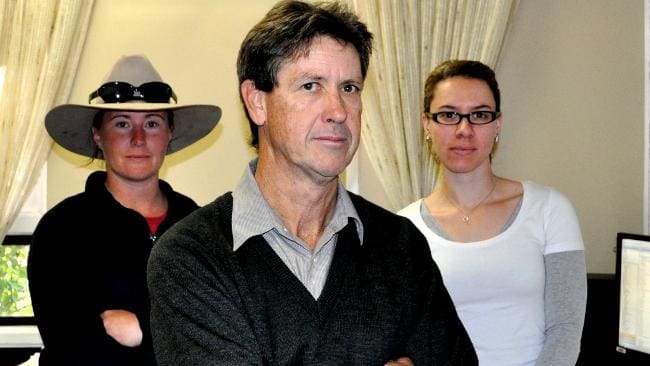The massacre at Columbine High School created a template for teenage spree kilers in the popular imagination: cold, clever, ruthless, disaffected, amoral, psychotic. Post-Columbine, whenever a gun shows up in school, the ghost of the Colorado killing field looms large. Even before this story of Esperance [Australia] Senior High School principal Ken Duffy disarming a shotgun-wielding teen makes the inevitable connection, it’s clear there’s something not quite Columbine going on . . .
The hero principal at the centre of a tense stand-off with a student carrying a loaded shotgun says he holds no hard feelings towards the 15-year-old boy. “I don’t know what I could have done, or what the school could have done, to have known that the boy would have got to such a state that that was the only way he thought he could make a statement. I can’t think of anything.”
Does that sound a bit CYA, defensive and legalese to you? Then consider this excerpt, also from news.com.au:
His lawyer told the court last week that the boy “snapped” after years of being bullied.
Mr Duffy blamed many “complex reasons” and acknowledged there were “some significant elements of bullying” over the years, but “nothing recent”.
According to Wikipedia. 14,500 resident live in Esperance, a small town on Australia’s west coast. Esperance Senior High School has 975 students in four grades. Are we to believe that the unnamed shotgun wielder’s mental anguish went unnoticed by his teachers, coaches,, classmates, family, community and (if he had them) friends?
And what of the Principal Duffy’s excuse that the bullying was not an issue because there hadn’t been any “recent” instances? Does the educator not know that bullying can traumatize children for their entire life?
Anyway, here’s how this played out:
He said he had just four minutes to act before hundreds of students poured into the school quadrangle, where the boy stood with a loaded double-barrel shotgun.
“I looked at the clock and it was four minutes to three, which means I haven’t got much time,” he recalled this week.
Mr Duffy, who has worked at the school for 16 years, said he was able to have a “rationally irrational discussion” with the boy and convince him to enter his office.
“We had got into my office and as we sat down the bell went,” he said.
“We just sat and talked. He was shaking as well. I said, ‘you’ve actually frightened me, I’m speaking calmly like you are, but I’m actually quite frightened’.
“I think it was important that he knew I may have been speaking calmly to him, but I still wasn’t my normal self.”
Mr Duffy spoke of his worst fears as images flashed through his mind of the 1999 Columbine High School massacre in the US in which 12 students and one teacher were killed and 21 students injured when two schoolboys opened fire with shotguns.
Despite being hailed a hero, the modest principal said he simply did what any other parent would do.
Under Mr Duffy’s guidance, the boy agreed to place the gun on the principal’s desk and surrender himself to police at about 3.35pm.
Common sense tells us that mandating schools “gun free zones” does nothing to prevent attackers from entering a campus with a firearm or firearms. The key to communal safety: act as a community. In terms of prevention, watch out for mental illness in all its forms, both within and without the school, and do something about it.
You don’t have to be a clinical psychologist to know that bullying breeds violence. That it must be identified and removed as a danger to communal safety. That treating its victims with respect and caution can—sometimes—prevent tragedy.
That may not be the lesson in Columbine, but it looks like it’s a lesson here.




